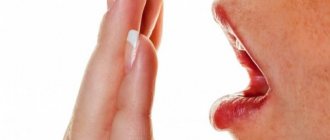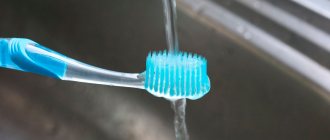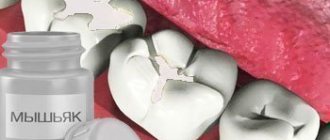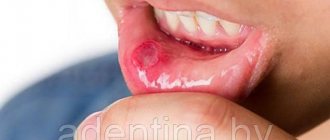How to remove bluing from white clothes?
You will need 1 teaspoon of citric acid. It must be dissolved in one glass of water. The resulting mixture is heated. The hot solution is applied to the stain and gently rubbed in using a cotton pad.
Interesting materials:
How to make a cur code? How to make classic Slime? How to make the keyboard on iPad smaller? How to make keyboard on the screen? How to make papier mache glue from PVA? How to make tile adhesive with your own hands? How to make glue from scrap materials? How to make glue paste? How to make PVA glue at home? How to make paste for crafts?
Procedure
How is blue linen used? The instructions will allow you to perform the procedure correctly:
- Dilute the substance according to the instructions. There should be no clots of coloring agent left in the water; it should be uniform in color.
- The bath needs to be filled with water.
- Then you should lay out your clothes in the bathroom. Uniformity is necessary so that when dyeing you get one color. The water should cover the item. For a slight bluing, a few minutes are enough, and for coloring from 1 hour. For jeans you need 2 hours.
- Then the item must be dried flat.
Choice
Painting with this product should only be carried out on suitable materials. It must be taken into account that:
- Blue for laundry must be water soluble. Then you will get a uniform color - insoluble ones make streaks when used in a concentrated manner.
- Powder and liquid should be diluted with water until dissolved before use.
- The substance is used for washing and rinsing. If you need coloring, it is advisable to choose a special product.
- The product is used to dye white materials and refresh blue fabrics. Dark colors do not change, but other light colors may produce unexpected results. The substance is typically used in updating jeans.
- Linen bluing can dye natural fabrics.
What is bluing for whitewashing?
To prevent this from happening, there is a long-known and tested recipe - you need to add ordinary “blue,” as it is popularly called, to the whitewash. In fact, this substance is called ultramarine, as evidenced on its label.
Interesting materials:
What original gift should you give your friend for the New Year? What lightens age spots? What to discover in the village? What ideas to open in a small town? What to open in a small village? What is celebrated on February 25? What refers to anthropometric indicators of physical development? What does accounting relate to? What applies to household services on Unified Internal Revenue? What is business communication?
Using blue for linen
More effective coloring and refreshment of natural linen can be achieved thanks to the instructions for use of this drug. In the description, pay attention to the procedures in which this substance is used. Certain types of blue are used during washing, some varieties - during the main or final rinsing or soaking process.
It doesn’t matter whether you are going to dye clothes or simply turn your linen blue, the main thing is to use a material based on natural cotton or linen fibers. In order to ensure the quality of the product and its correct dilution, you can initially experiment on a small piece of fabric.
Most often, classic shades of jeans, blue and light blue underwear, and less often white fabric are dyed blue. In order to get a good tinting result, use water-soluble bluing for rinsing. Insoluble may give unwanted divorce). Before use, dry or liquid coloring pigment is thoroughly dissolved in water until a uniform color without clots is obtained. To obtain an ideal solution, the liquid is often filtered through several layers of gauze.
The dyeing process should only be done with clean, washed and rinsed laundry. If the item is large enough, it is best to paint it in the bath. The container is filled with water so that the water completely covers the material. The dye solution is poured into the bath, and the color scheme is regulated by both the concentration of the solution and the volume of water in the vessel. The linen is lowered into the bathtub in a straightened form without folds or bends and kept for a certain amount of time. Good color fixation is achieved after 1-2 hours, but in the instructions for use you can find a more detailed description of the ratios of types of fabric and tinting time. After this, the item is rinsed in plain water or water mixed with vinegar and hung flat to dry.
Using the washing machine
If allowed, bluing for washing clothes can be used in the washing machine. You can also do coloring. The work is performed in the following sequence:
- You should check whether there are any dense lumps in the liquid dye, and the powdered dye should be diluted with water. Grains of sand can ruin clothes and leave bright stains on them.
- The product is added to the drum of the machine. If the instructions say to add soda or salt, then do so. This is required to fix the color.
- You need to choose an intensive wash if the fabric is thick. And the temperature is 90-95 degrees. The cycle is long.
- Do not use washing powders, rinse aids and other products.
- After washing, jeans should be placed in a basin to soak in vinegar, which will fix the color.
- To prevent other clothes from getting dirty, the car is turned on at idle speed and then wiped from the inside. It is advisable to add a small amount of bleach to the powder compartment.
When using blue, you need to consider that:
- A quality product will not stain your hands or bathtub. If traces of it remain, there is a possibility of damage to the item.
- Blue is not considered a permanent dye - it fades with each wash, so repeated procedures are required. For lasting results, you need to use special paints for materials.
Each item needs to be processed separately if you want to get an excellent result. It is necessary to adhere to the rules of the procedure, observing the time period for painting.
The dyes have good resistance to external factors, so you can safely wash them. But you should not prolong the procedure or change the temperature. It is advisable to wash the item by hand with water at 40 degrees. Thus, blue can be used to color things. It is usually used for jeans. Even an old thing takes on a new look.
In order to eliminate the yellowish tint on linen, it is necessary to turn it blue.
The laundry turns blue during the last rinse.
Remember that when washing cotton fabrics with soap, bluing is not desirable.
The method of using bluing agents is very simple: tie an incomplete teaspoon of paste-like bluing, 1-2 tablets or a bag of powder in a piece of clean white cloth and “blue” cold water in a “knot”. Then dip the washed and rinsed laundry into it for a few seconds.
When using liquid blue, prepare a bluing solution at the rate of 3 - 4 drops of the drug per 1 liter. water.
When washing in a machine, the blue is dissolved directly in the detergent solution poured into the tank.
In order for ultramarine to give an even color without stains to things, regardless of the fabric, you do not need to blue them all at once.
It is better to blue each item separately, keeping it in the solution for the same amount of time.
Washing methods
The curtains can be washed either in a machine or by hand. Remember that jewelry in the form of muslin, ribbons, and fringe do not like automatic washing and can be hopelessly damaged. But dense fabrics, curtains made of polyester and viscose feel good in the drum. Hand washing is more gentle, but old tulle curtains cannot be tidied up this way.
Manual
It would seem that this is the most basic way: pour water, throw in a handful of powder and, with physical effort, wash the item. But not everything is so simple, since you need to wash tulle wisely. To achieve the result, the following actions are required.
- Soak. Make a saline solution, add any detergent and soak the tulle in the liquid. If it is not too dirty, then two to three hours will be enough, otherwise you can leave it overnight. Before washing, you need to rinse the curtains in several waters.
- Wash. Wash in warm water using a suitable detergent. If you take powder, first dissolve it in water. But to brighten the color, you can pour in a little vinegar. Lather the water well, then add the tulle there. Foam is the product that perfectly washes delicate fabrics. Remember the curtains in the water. No need to squeeze or rub too hard - this is unnecessary.
- Rinse . Pour clean water. Add some blue. Dip the curtains and rinse them gently. Thanks to the blue, you can wash the tulle from grayness - the curtains will acquire a barely noticeable shimmer and freshness, as if you had just bought them.
Machine
Activator-type machines are not suitable for such things, so it is best to wash tulle in an automatic washing machine. To prevent the curtains from being damaged, you need to use a special bag, which is what it’s called: for washing delicate items. If you don't have one, fold the tulle into a clean white pillowcase. What's next? Follow the following five-step procedure.
- Place the tulle in the drum of the machine.
- Pour gentle detergent and tulle bleach into the special compartments (it does not contain chlorine).
- Select the “delicate”, “gentle”, “neat” mode (each machine has something similar). The cycle should be the smallest that the programs offer.
- Turn on the “extra rinse” option.
- Turn off spin or select the lowest speed available.
If you do everything correctly, then at the end of the wash you will get clean and fresh curtains without making any special efforts - the machine will do everything for you.
What is the purpose of blue
Let's try to go through the points. It is used for whitewashing and added to lime. This happened before, but this practice still exists today.
It is diluted in water, and then glass, wine glasses, etc. are washed in this water, which can then shine like crystal.
Our grandmothers loved to do laundry with it. Everything white takes on gray shades with every wash and I wanted to fix this. And this dye restores whiteness. And the tulle was also washed using this product. However, you need to know how to do it. Be careful because the blue can stain anything it comes into contact with, but it depends on the quality of it. And if you add more dye, you can update a blue item that has lost its color saturation. It all depends on how much substance you add.
But let us also note that there are different types of blue. And if you want to refresh the color of the fabric, then read the instructions carefully. After all, it will be written there when to use this product. For example, during washing or soaking laundry in this substance. Well, actually, there are 2 additional types: soluble and insoluble.
You also need to remember that fabric matters too. It is better to give preference in this matter to cotton or linen. In general, do a test before completely painting the item. It's better to check than to spoil the thing.
During the construction process, as a rule, builders need to mark something. Not a holiday, but to make a note. So they use it as such a conditional marker.
Quite “hello from that time” - dyeing jeans and hair. Yes, yes, hair! Some walked like Malvinas. And it was strange, to say the least. But jeans are cool! This is a certain symbol of that era.
Important
- Blue is needed for those who prefer simplified processing methods to a variety of toxic bleaching powders.
- A high-quality product does not stain containers or the skin of your hands.
- Blue is not a permanent dye. Each subsequent wash will wash out the color pigments, so re-blueing should be done from time to time.
- To obtain a good result, each item must be processed separately.
- Table salt added along with the blue when rinsing will help keep the blue color longer.
- To achieve the desired result, it is better to first practice on old things.
- Always read the instructions for use of the dye, because depending on the manufacturer, release form and composition, dyeing may have different results.
- Blue blue, which contains starch, should be boiled after dilution and then strained.
- Do not try to replace the bluing with a blue item of clothing when washing white clothes in the machine, as this may lead to unpredictable results.
- The chemical should be stored in a tightly closed container out of the reach of children.
Blue is a fairly cheap substance that can replace many expensive powders with a whitening effect. It is also an indispensable product for adding freshness to linen and richness to blue and blue clothes. Also, such a simple, popular substance as blueing can serve as a source of inspiration for creating unusual shades or patterns when dyeing.
Compound
What is the composition of blue for linen? It is a sodium aluminosilicate containing sulfur and sodium sulfate. In the USSR, grade 1 and grade 2 products were sold, which differed in intensity and shade. The blue should dissolve easily in water. Because of its lightness, it does not stay at the bottom for long. The composition of the Soviet product excluded the presence of organic dyes, Prussian blue and soot.











